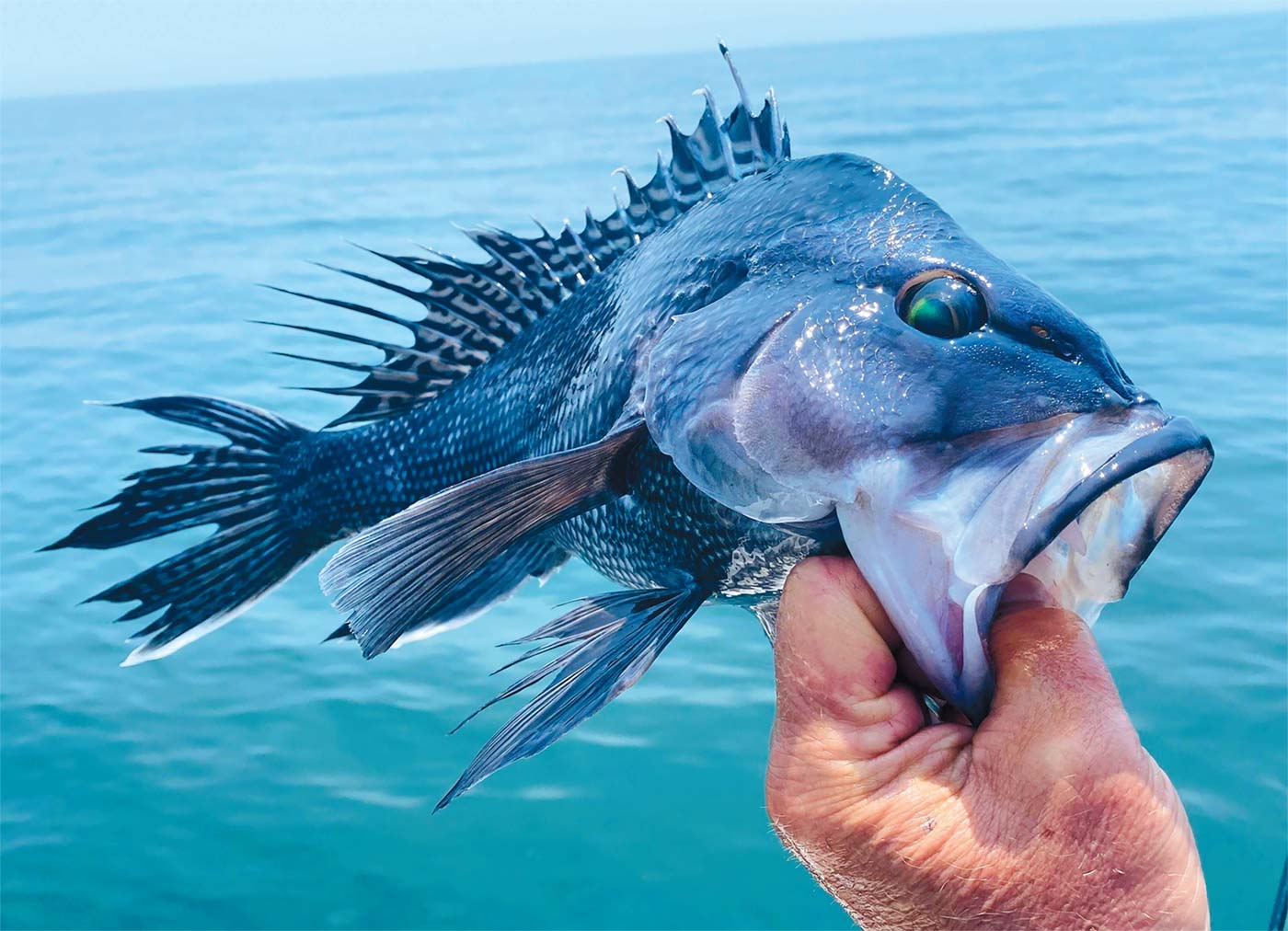Exploring Local, Sustainable Seafood
The world’s oceans are facing a variety of pressures: over fishing, warming waters, and ocean-acidification are threatening our food system. The World Wildlife Fund states that as much as 12% of the world’s population is reliant upon fisheries and aquaculture to maintain a livelihood and nearly 3 billion people worldwide consume seafood as a primary source of protein. Conserving our ocean and its resources is critical for people, the economy, and the planet.
Overfishing occurs when fish are removed so quickly from their environment that they cannot reproduce fast enough to maintain robust populations. The World Wildlife Fund estimates that nearly one third of commercial fish stocks are over fished. Although some commercial fishermen do follow sustainable management practices, an inevitability of some of their systems, such as bottom trawls, is the prevalence of bycatch – ocean life which is unintentionally caught along with the targeted species. According to the National Oceanic and Atmospheric Administration (NOAA) Fisheries, sixteen fish species are classified as overfished in New England.
Warming waters have led some fish species to migrate further north while ocean acidification caused by carbon pollution places shell fish at risk. Major oyster hatcheries on the East Coast have struggled when the water’s pH has become too low. The chemical reaction required for the shellfish to sequester calcium carbonate from the water to lay down shell is impacted by the pH of the water. So, when the pH of the water is lowered, there is less available calcium carbonate to grow the shells.
These challenges leave us with the questions: is the future of our seafood in hot water? What’s the best way to eat sustainably?
IT'S TIME TO CAST A LINE FOR LOCAL SEAFOOD
NOAA Fisheries data reveals that 70% to 85% of seafood consumed in the United States is imported. What may perplex seafood lovers is that some of the imported seafood is in fact caught by American fishermen but is processed overseas and then brought back to the United States. The national FishWatch database allows citizens to understand the different types of fish native to each region, the rate each species is being fished at, its availability, and health benefits.
Locally, the non-profit Eating with the Ecosystem based in Wakefield, Rhode Island, educates people about the wide array of wild seafood found in New England waters. They offer programs including School of Fish seafood cooking workshops, a Scales & Tales mobile kitchen food boat, community dinners, and other inspiring ways to discover local seafood. A few local, wild species that may catch your eye the next time you dine include: black sea bass, skate, hake, and haddock. For local recipes and cooking ideas, explore Eating with the Ecosystem’s recipes.
SUSPENSION-CULTURE OYSTER FARMING FOR THE PLANET
Not far off the Connecticut coast, Fishers Island Oyster Farm cultivates sustainably grown oysters. The Malinowski family has owned and operated Fishers Island Oyster Farm for over 30 years. Their motto is, “Farm without harm.” Steve Malinowski, PhD, is a true scientist and has taken great care to lead his team in using suspension- culture growing methods that minimize environmental impact.
While some shellfish harvesters may use a practice known as dredging where machinery is scraped along the seafloor and can potentially damage delicate ocean ecosystems, the Malinowski’s suspension-culture method involves growing the oysters in nets that are suspended from buoy lines. The tall, five-tiered lantern nets can hold approximately 100 oysters in each tier. The Malinowski’s maintain a rigorous Quality Assurance Program that involves weekly microbiological testing by an accredited USDA laboratory to ensure the highest quality oysters.
Sarah Malinowski is also an environmentalist and works with the Shellfish Growers Climate Coalition, a collection of shellfish businesses and the Nature Conservancy that “advocate for sound climate policy.” The Shellfish Growers Climate Coalition was the brainchild of an oyster farmer named Bill Mook of Mook Sea Farm in Bristol, Maine. What started with seven oyster farms has grown to an organization with over 250 members.
SUGAR KELP MAKING A SPLASH ON LOCAL MENUS
Another type of sustainable seafood which is making a splash on local menus is sugar kelp. Although eating seaweed may seem new for many Connecticut residents, seaweed has been consumed around the world for thousands of years. But there’s no harm in bringing this nutritious food back to the surface. This past spring marked the Second Annual New England Kelp Harvest Week where dozens of local restaurants featured kelp on their menu. Included in this year’s seaweed dinners were edible CT EAST supporters The Shipwright’s Daughter and the Oyster Club, both in Mystic. Sugar kelp can be a valuable source of vitamins and minerals including iodine which is needed to make hormones released by the thyroid gland.
Jonathan McGee is the owner of New England Sea Farms, a small-scale sugar kelp farm located off the coast Guilford, Connecticut near Leetes Island. The sugar kelp is grown along ropes that are strung between buoys. The growing season occurs during the winter and early spring months. Amazingly, the sugar kelp can grow at rates as fast as an inch per day. Warming waters and more frequent extreme weather events can impact the sugar kelp growing season, so keeping the climate stable is a key focus for sugar kelp farmers as it is for those in the shellfish industry.
FISHING SUSTAINABLY TO KEEP OUR OCEAN’S VALUABLE RESOURCES AFLOAT
According to the Monterey Bay Aquarium and the Marine Stewardship Council, the simple pole-and-line gear used by most recreational fishermen provide one of the most sustainable ways to catch wild fish. It minimizes bycatch and because only one fish is typically being caught at a time it allows fish to be caught at sustainable rates. Recreational fishers must abide by regulations which specify the minimum length for the fish they catch, a daily limit, and open season when the fish can be caught. This practice helps local fish populations stay at healthy levels. So, if you’re really interested in wild-caught fish that’s caught sustainably, you may want to give fishing a try for yourself!
Local fisherman Mike Smith of Captain Mike Smith’s Fishing Adventures in Niantic has spent his life on the water. He began fishing when he was around five years old and later worked for Frank M. Flower Oyster Company in Oyster Bay, New York. He now owns and manages his own fishing charter business.
Mike has noticed that limits placed on striped bass have helped the population in just a few years. Current regulations only allow recreational fishermen to take fish between 28 and 35 inches in length. Previously, anything 28 inches and above could be taken home. By keeping the larger fish in the water, they can go back and breed. Mike stated, “This is the third year we’re in it, and we can already see an increase in the population. Everyone is trying to do the right thing and help the fish populations come back.”
If casting a line and fishing for yourself is not for you, you can choose your catch wisely. One thing many seafood lovers may not be familiar with is that certain types of seafood may be in abundance during specific seasons. Just like the food we enjoy on land, there are certain times of year when it may be optimal to eat different types of seafood. By supporting commercial fishermen who are using sustainable fishing practices and catching what’s available in abundance locally at certain times of year, you can make food choices that are good for you, the local economy, and the environment.
Thankfully, local fishermen and those working in aquaculture along the Connecticut coastline are bringing in a wave of nourishing, sustainable seafood for people to enjoy.
- Learn more at eatingwiththeecosystem.org - fisheries.noaa.gov – and fishwatch.gov





